What are the best paint colors that go with natural wood? Experts reveal how to create the perfect pairing
Finding paint colors that go with natural wood isn't as simple as it seems – here's how to get it right
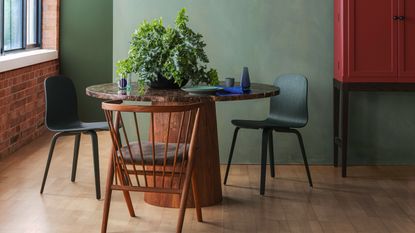

Not all wood is made equal, which is why choosing paint colors that go with natural wood can be tricky. If you have hardwood floors or lots of wooden furniture, it's important to make sure you're choosing the right paint shade to match – after all, what works with oak might not necessarily make sense for a darker, richer wood like walnut.
So how do you choose the perfect paint color match for wood? It turns out that like any other decorating quandary – for example, finding colors that go with green, or picking the perfect shade of white – it's all about color theory. To find out more, we spoke to interior designers and color experts for their advice – as well as their coolest, most unexpected ideas for color pairings.
What are the paint colors that go with natural wood?
Like everything in interior design, the color you choose all depends on the vibe you're going for, says Noel Gatts, interior designer and founder of beam&bloom. 'Darker, moodier spaces could utilize a dark cool color like Benjamin Moore's Gentlemen's Gray to create subtle contrast with walnut and other dark wood tones,' she says. For an airier feel, on the other hand, 'a light, cool grey like Sterling does a beautiful job freshening up spaces with neutral wood tone trim and accents like white oak or pine.'
Pale woods
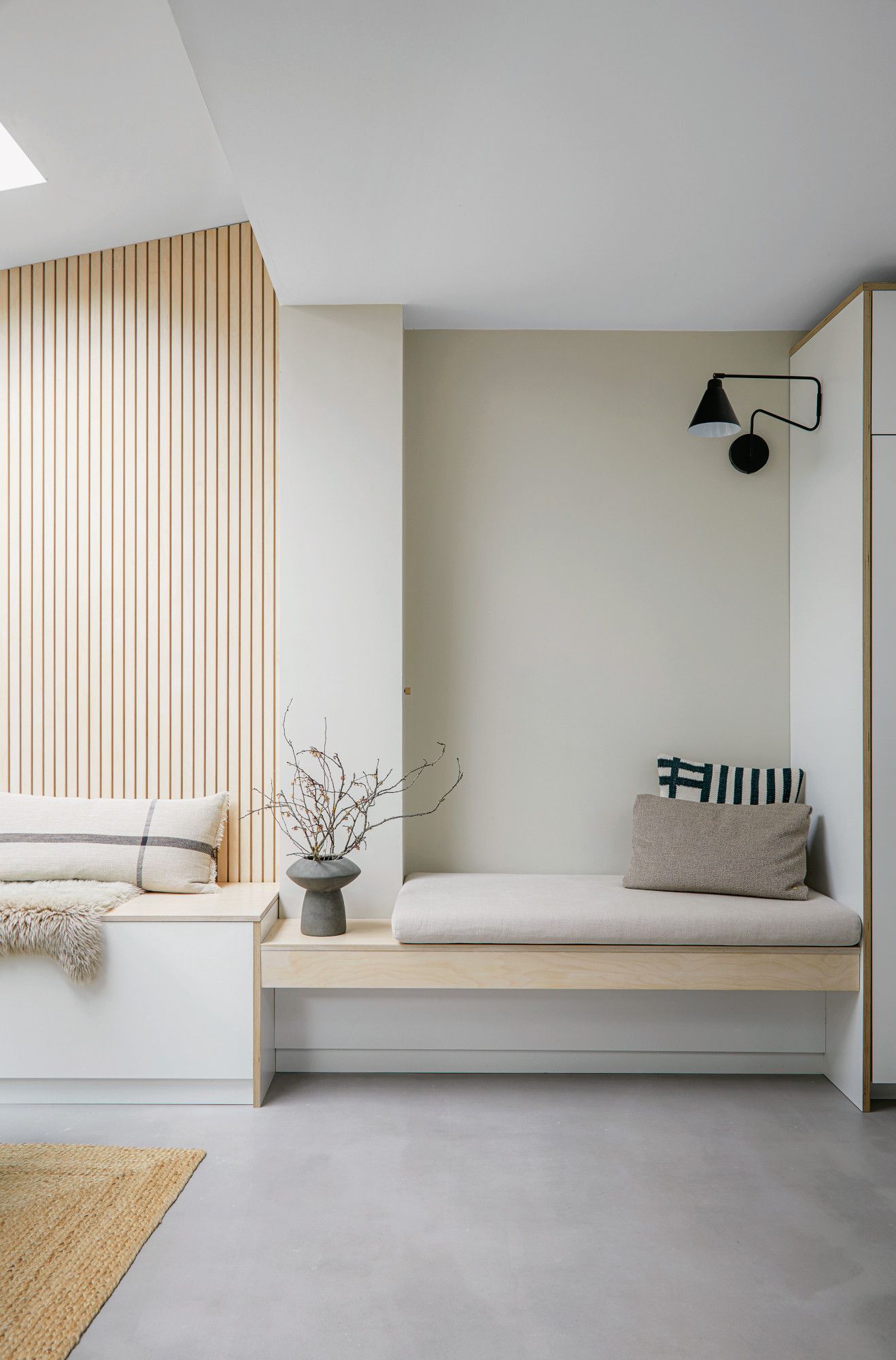
Little Greene's creative director Ruth Mottershead advises thinking of light wood tones as neutrals within your scheme. 'Consider their undertones carefully,' she says. 'Are they warm or cool? Which hidden ones can you see within the woodgrain?' Once you've done this, pair with colors accordingly. And if in doubt, she says, 'opt for an easy-to-scheme versatile hue that is neither too warm nor too cool, such as French Grey or Slaked Lime.'
Aaron Markwell, color lead at COAT Paints, agrees that neutrals are the way to go. 'Pair light woods like beech, some oaks and ash with pale, warm neutrals – especially with pine,' he says. 'I would avoid anything very grey as a pairing for pine, as it can be quite yellow or orange and creates high contrast with greys.'
While woods like pine, beech and plywood can vary in tone, they're generally quite versatile – which makes them a great candidate for pairing with bold color. 'Olive greens or navys are easy to mix in with light woods,' says Amy Leferink, interior designer at Interior Impressions. 'We also love using black or charcoal paint colors in elements such as an island or beverage bar while keeping the rest of the paint choices more neutral.'
If bold colors aren't for you but you want to veer away from neutrals, Mathew Freeman, president of the British Institute of Interior Design, recommends pairing with soft to medium pastel tones instead. '[Make] sure you have some white in your scheme to keep it fresh, but also include darker details to keep a good balance of light and dark, as well as incorporating patterns and textures to maintain visual interest,' he advises.
Dark woods
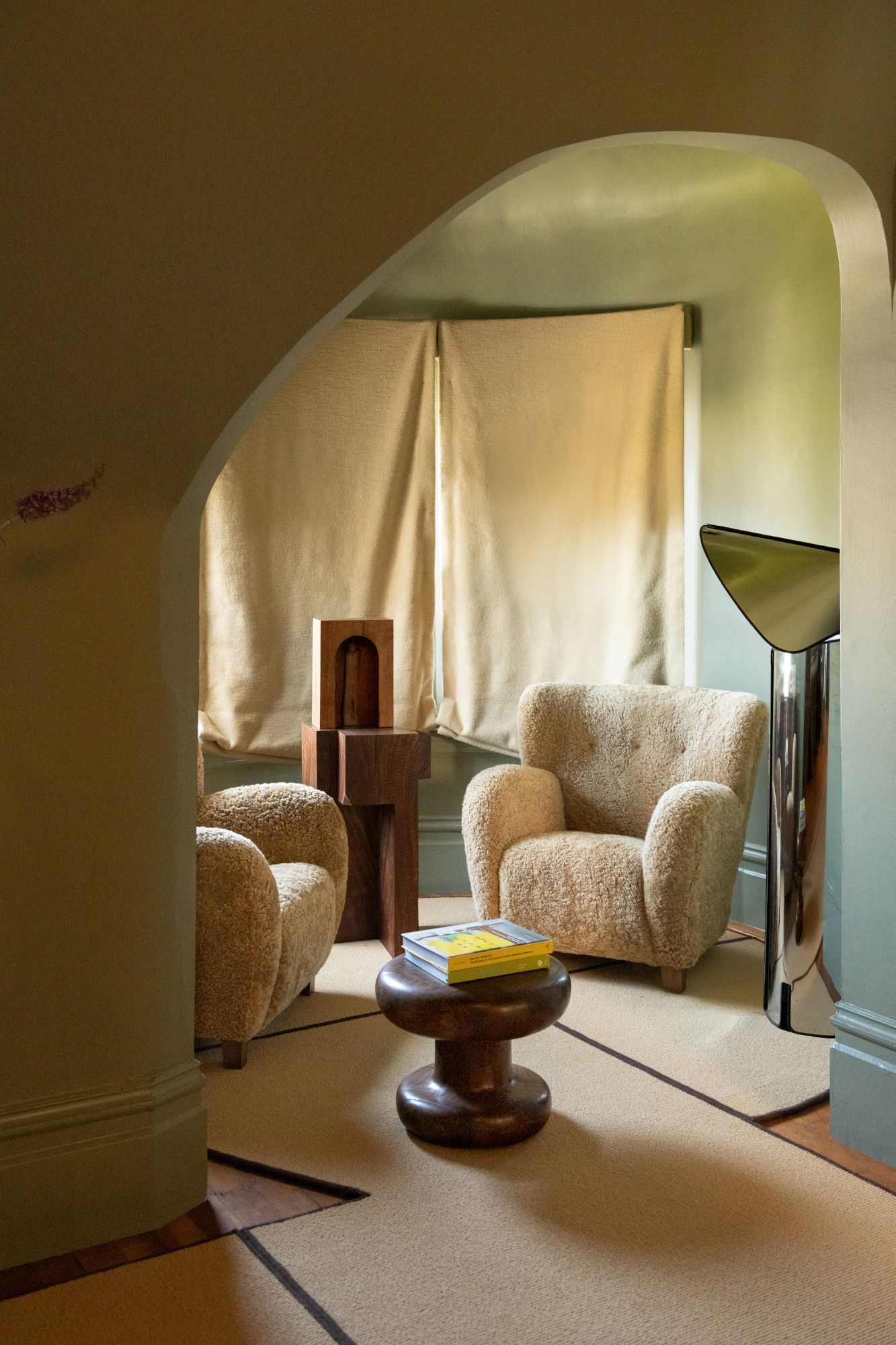
Deep, dark woods like walnut and mahogany make for the perfect pairing with one of today's most popular colors – green. In this project by Studio AHEAD, walnut furniture sits comfortably in a room painted in an on-trend pistachio – but it's just as suited to brighter shades. 'Dark woods such as walnut or mahogany work fantastically well with green, from fresher hues such as Boxington for a contrasting feel, to sumptuous rich greens such as Puck for an elegant interior,' says Ruth Mottershead.
'Darker woods bring the warmth and richness to schemes, but you can use a lighter, softer tone to create more of a monochromatic feel, depending on your furniture and soft furnishings selection,' says Mathew Freeman. 'Or opt for a darker neutral tone to create a moodier, more sophisticated feel.'
Aaron Markwell recommends choosing light and dark taupes for dark woods – and also has a tip for getting the balance right. 'Keep darker woods like mahogany and walnut to flooring and table tops, as they create a grounding feeling when used on surfaces that face upwards,' he says.
Want to go a bit left-field? Take the advice of Sam Baldry, head of design at Swoon, and try neon. 'Neon has come around on the trend rotation a few times in the last decade, but this time we are talking specifically about lighting and small pops of accessories, not entire bedspreads, or feature walls,' he says. 'Pairing neon pops of color with the opulence and mystery of dark wood is a super chic combination that will make your home feel cool and current.'
Oak tones
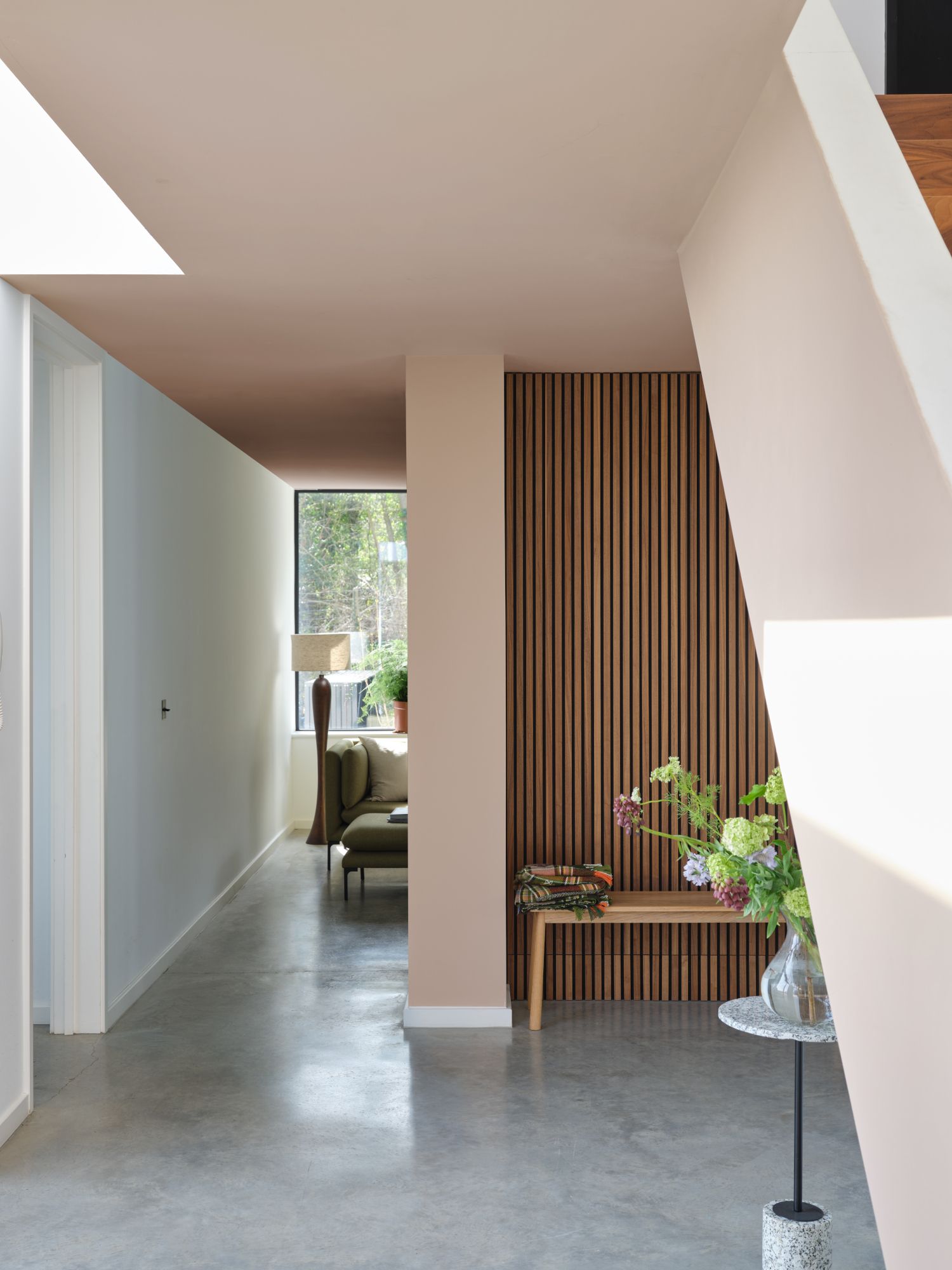
Oak is a commonly used wood thanks to its strength and versatility – but because tones vary so dramatically, it can be difficult to find a suitable color pairing.
'New oak tends to be cleaner and more blond, so look to colors that can respond to this,' says Farrow & Ball brand ambassador Patrick O'Donnell. 'A soft yellow like Hay will work in a subtle, restful fashion and has an underlying green note, which will flatter the wood while delivering warmth – a great choice for a sunny living room idea or even a home office.'
On the other hand, 'antique oak tends to be darker with more variables of tone, and these will respond beautifully to richer, deeper tones,' Patrick adds. 'Templeton Pink (pictured) – a deeply earthy pink – will make a wonderful pairing, or for a full explosion of drama, something like Studio Green would be a chic statement for an intimate and luxurious dining room.'
Ruth Mottershead recommends considering the atmosphere you're looking to create. 'Is it cool and contemporary or warm and inviting?' she says. 'A strong yellow or a bold orange will bring out the warm tones in these wood finishes, whilst a cooler grey will create a cool, sophisticated feel.'
Warm woods
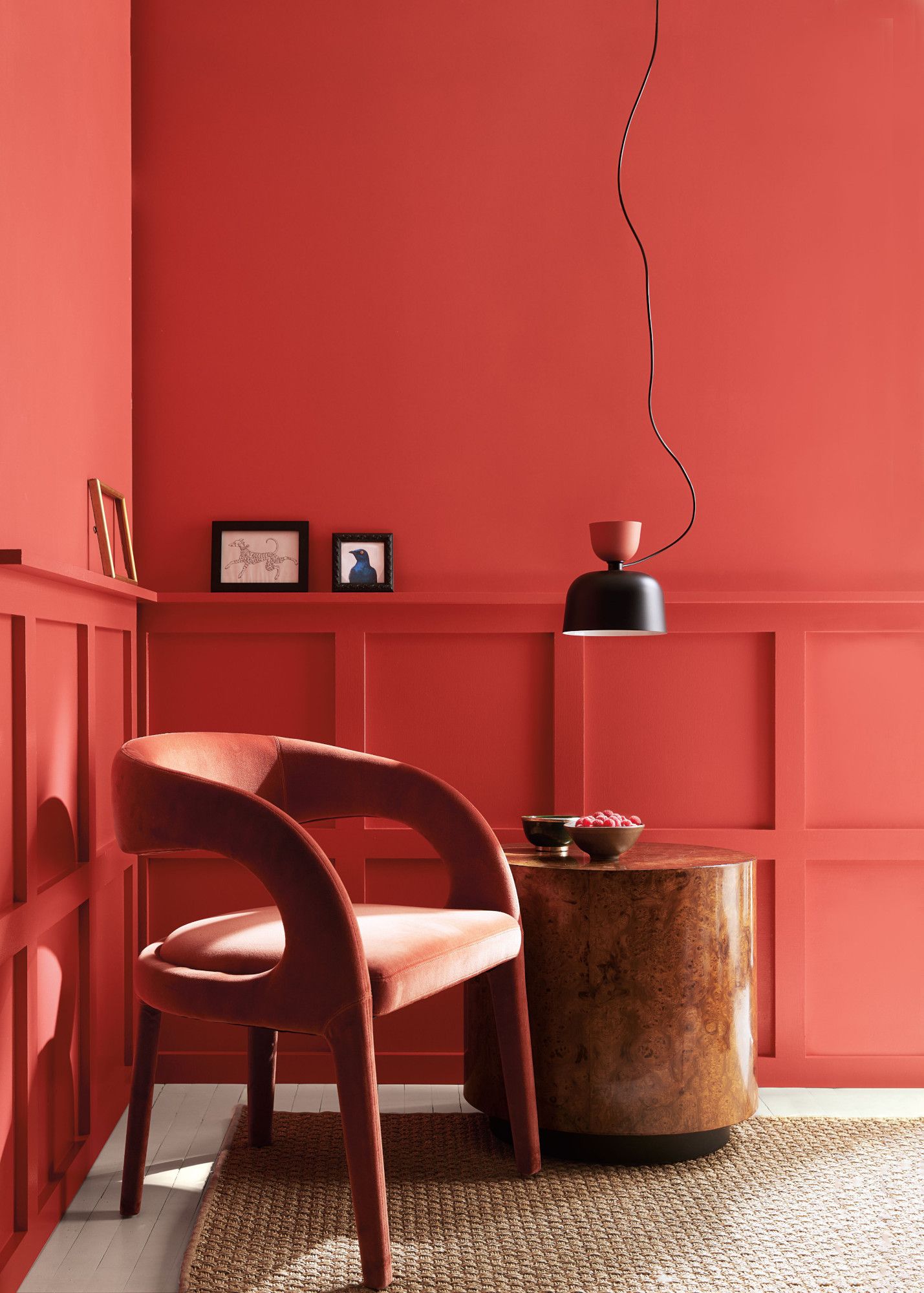
Warm woods like acacia, teak and cherry have a reddish tone that makes them perfectly suited to warmer shades – though it also means they can clash with cooler tones, so be careful. 'Warmer tone woods can be on the red side, so you can pair this with more neutral tones, allowing the warmth from the wood to contrast with the cooler tones,' says Mathew Freeman. 'An alternative option is to enhance the warmer tones by choosing a warm neutral tone, to create a warm cossetting feel.
'Warm woods like acacia, teak and cherry all have red undertones, so I try to pair with paint colors that also have some redness to them,' says Aaron Markwell. 'Mid-century and biscuit beiges like Humble, Well Grounded or taupes like Good Intentions work particularly well for these. Pair with red walls like Old Street if you want your warm woods to feel a little more relaxed.'
For a bolder scheme, consider rich shades that dial up the drama. 'Pair dark, warm woods with deep and warm colors such as Baked Cherry,' advises Ruth Mottershead. 'Or create a dynamic and dramatic interior with contrasting blues or teal colors such as Canton or Air Force Blue.'
If you're looking to move away from a mid-century feel – though still a popular interior design trend – then Amy Leferink suggests balancing out the warmth. 'Painting the walls a creamy or greyish white can help balance the eye,' she says. 'One of our favorite colors to pair with warmer woods is grey blue; it makes the warm wood really stand out against the walls.'
How to choose the best paint color for natural wood
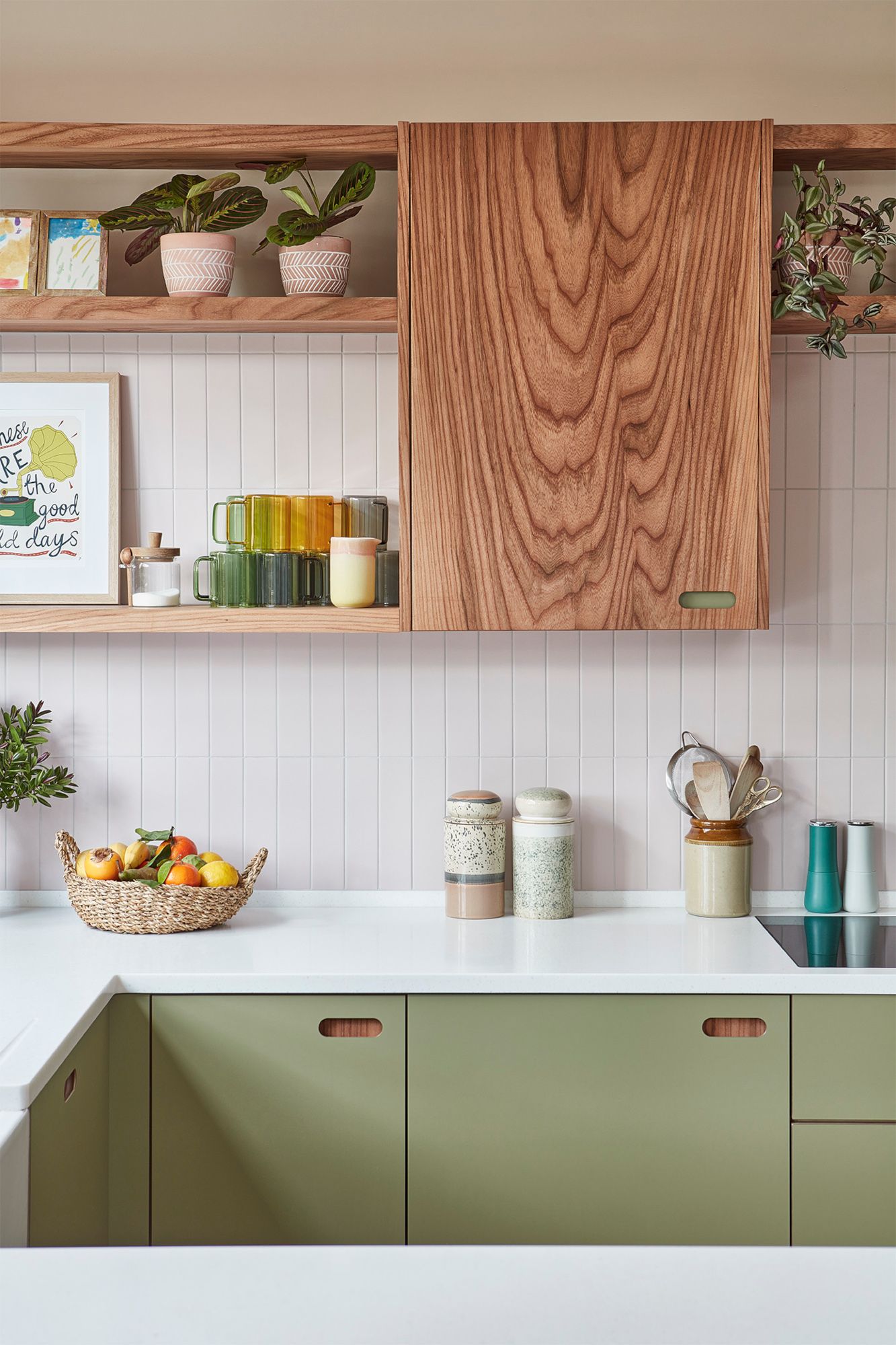
Of course, wood's natural grains mean it can vary from piece to piece – so while the designers all have their favorite pairings, they also stress the important of understanding exactly how to match wood with a paint shade. 'It’s important to look for colors that complement natural wood,' says Ruth Mottershead. 'Use a color card or fan deck to identify these. For example, strong yellows or oranges combine beautifully with warmer woods; for cooler more ash-toned woods, consider cooler neutrals for a harmonious finish.'
There are some general guidelines you can follow that will increase your chances of color-matching success. 'In general, I'd say if you're looking for less vibrancy and more of a subtle feel, aim for very light neutral colors with warm or neutral undertones that meld with the warm undertones of the wood,' says Noel Gatts. 'If you want to go darker on your walls, explore deep natural colors, like night sky blues and forest greens. For more of a fresh modern vibe, consider light violet or pale blue tones that really contrast and pop off of the organic feel of natural wood tones. No matter which direction you want to explore, always gather samples to view with your wood tones in different natural and artificial lighting throughout the day.'
Leila Touwen is co-founder of Pluck – a kitchen company celebrated for its vibrant designs, which often pair woodgrain with brightly colored laminate. 'Due to their organic patterns and natural hues, woods bring softness and warmth to a kitchen’s scheme,' Leila says. 'However, this does not mean all woods work well with contrasting cool colors as the underlying shades – the subtle greens, pinks, reds or browns – need to be considered.'
Leila recommends sourcing a sample of the wood you plan to use when you're planning kitchen color ideas – but bear in mind the color and grain may vary from tree to tree. Still, it's a good way to get a feel for the quintessential hues, she says. 'Have a play around. It may be if you have your heart set on one color and it doesn’t look great next to the wood, you can avoid them coming into direct contact in your scheme – maybe by adding a third bridging color. Basically, don’t feel restricted by rules, as we have designed many kitchens that show how colours and woods can be paired in both traditional and more unusual ways.'
Finally, don't forget to plan with the other elements of your scheme. 'Think about all the elements of the room that you are incorporating: fabrics, artwork, rugs and flooring should all be considered,' says Amy Leferink. 'Always have the wood finish sample on hand – photos do not work well, as they aren’t accurate enough representations of the colors and tones. Once you have these elements together, your paint color should create a cohesiveness between everything.'
Be The First To Know
The Livingetc newsletter is your shortcut to the now and the next in home design. Subscribe today to receive a stunning free 200-page book of the best homes from around the world.

Ellen is deputy editor of Livingetc magazine. She cut her teeth working for sister publication Real Homes, starting as features editor before becoming deputy editor. There, she enjoyed taking a peek inside beautiful homes and discovered a love for design and architecture that eventually led her here. She has also written for other titles including Homes & Gardens and Gardeningetc. While she gets ready to buy a house of her own, she takes inspiration from the works of some of her favourite architects and tastemakers. She has a particular passion for green design and enjoys shopping small, local and second-hand where she can.
-
 How to Thaw a Frozen Pipe — Learn Everything You Need to Know in 5 Minutes With This Guide
How to Thaw a Frozen Pipe — Learn Everything You Need to Know in 5 Minutes With This GuideWinter storm caught you off guard? We asked an expert — just how do you thaw a frozen pipe?
By Hugh Metcalf Published
-
 The 12 Very Best Silk Bedding Pieces — As Our Style Editor Says: 'It's What Dreams Are Made Of!'
The 12 Very Best Silk Bedding Pieces — As Our Style Editor Says: 'It's What Dreams Are Made Of!'Slumber in lustrous luxury with the very best silk bedding sheets, duvets, pillowcases, and more — your sleep score will thank us later
By Julia Demer Published

